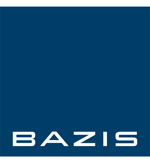
The ease with which new home, townhouse or condominium buyers can get a mortgage fluctuates over time depending on borrowing limits, interest rates, insurance rules and more. If you’re thinking of buying real estate, you’ll want to know the latest market news and updates. The Canada Mortgage and Housing Corporation (CMHC) recently announced changes that may affect your ability to get a mortgage. This comprehensive blog will cover all the new rules and everything you need to know if you’re considering applying for a mortgage in the near future.
Canada’s New Mortgage Eligibility Rules
In response to the COVID-19 pandemic, the CMHC announced changes to the eligibility rules for mortgage insurance in June 2020. The new rules came into effect on July 1, 2020.
As the COVID-19 pandemic has affected millions of Canadians and has heavily impacted the housing industry due to widespread job losses, businesses closing and a temporary drop in immigration, the CMHC responded by changing its underwriting policies for insured mortgages. These rules were designed to protect Canadian home buyers and to reduce risk.
According to the CMHC, the following changes will now apply for new applications for homeowner transactional and portfolio mortgage insurance:
- Limiting the Gross/Total Debt Servicing (GDS/TDS) ratios to its standard requirements of 35/42;
- Establishing minimum credit score of 680 for at least one borrower; and
- Non-traditional sources of down payment that increase indebtedness will no longer be treated as equity for insurance purposes.
In effect, the new mortgage rules lower the amount of debt that you are able to carry (as an applicant for an insured mortgage), require you to have a higher credit score than before in order to qualify for CMHC insurance, and require that you use your own funds for your down payment, rather than borrowed funds.
Here is a more detailed breakdown, as summarized from MoneySense:
Change 1: Less Debt as a Percentage of Gross Income
Old rule: If a buyer had a good credit score and reliable income, they were previously able to spend up to 39% of their gross income on housing (which includes their mortgage, property tax, heating bill and half of condo fees), and they were allowed to borrow up to 44% of gross income once credit card, car payments and other loans were included.
New rule: Now, all home buyers are limited to spending up to 35% of their gross income on housing, and can only borrow up to 42% of gross income once other loans are included.
Change 2: New Minimum Credit Score Established
Old rule: Previously, in order to qualify for an insured mortgage, at least one borrower (or their guarantor) had to have a minimum credit score of 600 (which is only considered “fair”).
New rule: Now, the minimum has been raised to 680 (which is considered “good”). Not sure what your credit score is? You can check it for free online.
Change 3: No More Borrowed Down Payments
Old rule: Previously, home buyers could use unsecured personal loans, unsecured lines of credit and even credit cards toward their minimum down payment. (The minimum down payment is 5% for houses valued up to $500,000 and 10% of the amount over $500,000, up to $1 million.)
New rule: Now, borrowers must provide the down payment “from their own resources,” CMHC says. Basically this means that home buyers must use their savings, equity from the sale of a property, a non-repayable financial gift from a relative, funds borrowed from other liquid financial assets or against other real property, or a government grant.
The mortgage stress test is staying the same. This test requires borrowers to prove that they can still make their monthly mortgage payment if interest rates rise.
How the New Rules May Impact You
These rules make it safer and more risk-free to hold a mortgage. Homeowners will have fewer worries about being approved for a too-high mortgage that may become stressful to uphold over time. Many Canadians have over-leveraged themselves to afford the home of their dreams, which can cause anxieties and the very real risk of defaulting on your mortgage and foreclosure.
Even before the COVID-19 pandemic hit in March, mortgage delinquency rates (the rate at which homeowners failed to make mortgage payments in accordance with their loan agreement) were at the highest they’d been in nearly a decade. According to Equifax Canada, the percentage of Canadians who were three or more months behind on their debt payments in the final three months of 2019 was 1.2%, an 11% jump compared with the same period in 2018.
The Benefit
With the debt that Canadian households have accumulated rising, getting a mortgage that’s within your means is just the smart thing to do.
“These actions will protect home buyers, reduce government and taxpayer risk, and support the stability of housing markets,” said Evan Siddall, CMHC’s President and CEO.
If you’re not in the high-risk category of new home buyers, these rules may not affect you at all. They’re also beneficial in that they reduce the number of new home buyers who will be able to enter the market, which is expected to slow demand and balance out home prices.
And with today’s historically low interest rates, it’s a great time to jump into the market. You’ll be able to save on interest and have lower monthly mortgage payments, putting more money in your pocket amidst the general financial uncertainty that Canada and the world are currently experiencing due to the COVID-19 crisis.
Make sure to follow BAZIS on social media (Facebook, Twitter and Instagram) for more news, info, and industry updates.
